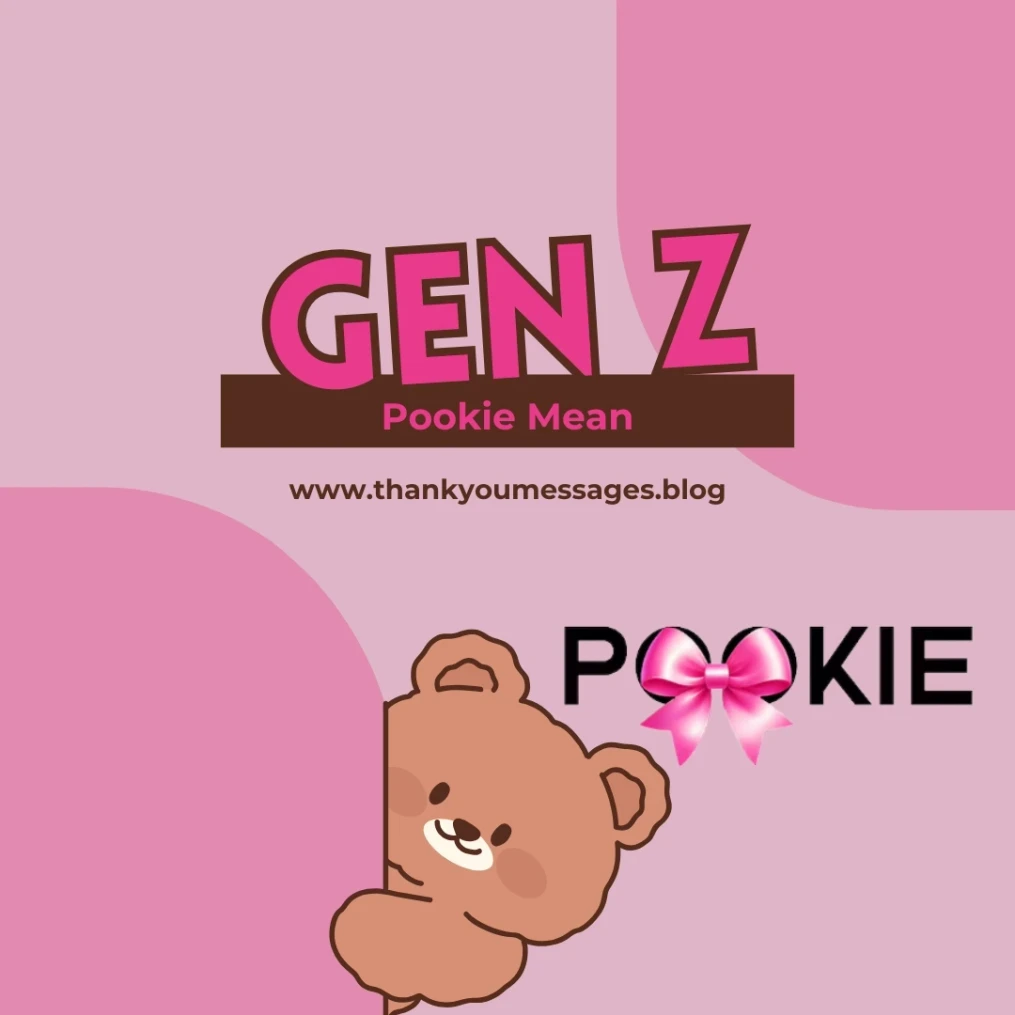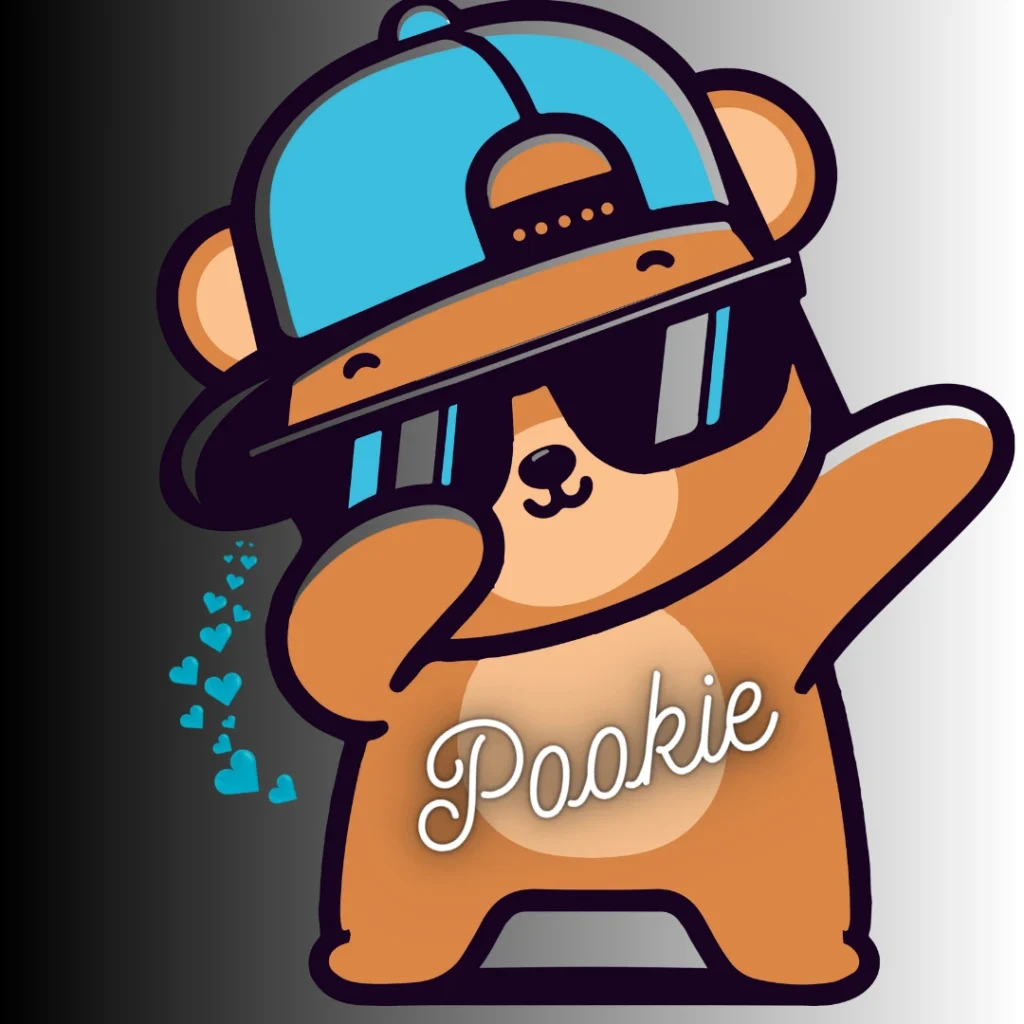The term Pookie mean a cultural phenomenon that has transcended its humble beginnings to become one of the most recognizable phrases in modern digital conversation.
“Pookie” is a slang term of endearment, much like “sweetie” or “honey”, but its usage has evolved far beyond simple affection to encompass a complex web of meanings that span generations, contexts, and social media platforms.
What Does Pookie Mean in Modern Context
A term of endearment and affection. It is a call similar to “lovebug”, “cuddlemuffin”, “babe”, “honey”, “lover” – this definition captures the essence of pookie’s modern-day usage.
The term has become a flexible expression that adapts to various relationships and contexts while preserving its core meaning of affection and closeness.
Primary Definition and Usage
The primary meaning of pookie centers around expressing endearment and affection toward someone special.
Very often, “Pookie” is an endearment, along with “sweetie,” “cutie,” or “darling”, making it a go-to term for expressing warmth in relationships.
This endearing quality has made it particularly popular among younger generations, who are seeking fresh ways to express affection.
The term’s flexibility allows it to be used throughout different dating dynamics. Whether addressing a romantic partner, close friend, family member, or even a beloved pet, pookie mean as a universal expression of care and fondness.
Today’s teens use “pookie” throughout different dating contexts. It could refer to a close friend, romantic partner, family member, or even a loved pet.
The emotional weight behind the term is significant. If someone is your “Pookie,” they mean a great deal to you, and there would be a hole in your life without them around, highlighting how the term represents deep emotional connections instead of casual acquaintanceship.
Contextual Variations and Interpretations
The meaning of pookie shifts subtly depending on the context in which it is used.
The meaning of Pookie can vary depending on the context, but it commonly conveys affection, familiarity, or camaraderie.
This adaptability has contributed to its widespread adoption across various social groups and communication patterns.
In romantic contexts, pookie often replaces traditional terms of endearment like “baby,” “honey,” or “sweetheart.”
The term carries a playful, intimate quality that resonates with couples seeking fresh ways to express their affection.
In its closest quality, “Pookie” has a playful, endearing aspect when used with close friends, pets, or family members.
The term also functions as a descriptor for something considered adorable. You might have come across various TikTok comments or captions describing someone as ‘so pookie’, which means they think the person is adorable!
This usage extends beyond personal relationships to describe objects, animals, or situations that evoke feelings of warmth and affection.
The Evolution of Pookie in Digital Culture
From Traditional Media to Social Media Dominance
Initially popularized through music and television, the term has been embraced and adapted by teens to fit their unique modes of expression.
The transition from traditional media to digital platforms has transformed pookie from a niche term into a mainstream expression that crosses generational boundaries.
The digital transformation of pookie represents a broader shift in how language evolves in the internet age.
Unlike traditional slang that might take years to spread geographically, pookie’s adoption happened across social media platforms, creating a shared linguistic experience for millions of users worldwide.
Social media platforms have served as incubators for the term’s evolution, allowing users to experiment with different contexts and meanings.
The visual nature of platforms like TikTok and Instagram has further contributed to pookie’s appeal, as users can pair the term with expressive content that enhances its endearing qualities.
TikTok and the Pookie Phenomenon
TikTok has played a crucial role in popularizing and evolving the meaning of pookie.
The platform’s algorithm has amplified content featuring the term, creating viral trends that have introduced pookie to new audiences.
“Pookie” has transcended its personal sweet meaning, even losing its cuteness, to now being affiliated with social media figures and influencers.
The platform’s short-form video format has proven ideal for demonstrating the various ways Pookie can be used. Users create content that showcases different relationship dynamics, emotional contexts, and creative applications of the term.
This visual demonstration has helped clarify the term’s meaning for those unfamiliar with its usage.
Influencers and content creators have contributed to pookie’s mainstream adoption by incorporating it into their regular vocabulary.
This exposure has helped normalize the term beyond its original social media context, making it acceptable in broader conversation settings.
Instagram and Pinterest Integration
The visual nature of Instagram and Pinterest has provided additional platforms for pookie’s cultural integration.
If you have been on TikTok, Instagram, Pinterest, or X, officially known as Twitter, you may have encountered the terms Rizz, Coquette, and Pookie, demonstrating the term’s presence across multiple social media ecosystems.
On Instagram, Pookie frequently appears in captions accompanying photos of loved ones, pets, or aesthetically pleasing content.
The term has become part of the platform’s visual storytelling culture, where users combine images with endearing language to express their emotions.
Pinterest users have embraced pookie in various lifestyle and relationship-focused content.
The term appears in boards dedicated to couple goals, friendship aesthetics, and family bonding, reflecting its versatility across different types of relationships and life experiences.
Generational Perspectives on Pookie
Gen Z’s Adoption and Adaptation
Generation Z has been instrumental in Pookie’s mainstream adoption and evolution.
Unlike some slang terms that might have hidden meanings, pookie’s transparency has made it particularly appealing to a generation that values authentic expression and clear communication.
Gen Z’s relationship with pookie mean broader generational attitudes toward language and expression.
This generation has embraced the term as part of their attempt to create more inclusive and affectionate communication patterns.
The term’s gender-neutral nature and universal applicability align with Gen Z’s values of inclusivity and acceptance.
The generation’s digital nativity has also influenced how Pookie is used and understood. Growing up with social media has given Gen Z users an intuitive understanding of how language evolves in digital spaces, making them natural adopters and adapters of terms like pookie.
Millennial and Gen X Reactions
Older generations have shown various reactions to Pookie’s popularity.
Some millennials have embraced the term as a natural evolution of endearment expressions, while others view it as part of a broader generational linguistic shift that requires translation and clarification.
Gen X reactions have been more mixed, with some viewing Pookie as another example of generational slang that will eventually fade.
However, the term’s simple, affectionate nature has made it more accessible to older generations compared to more complex slang expressions.
The intergenerational adoption of pookie has been facilitated by its clear meaning and positive connotations.
Unlike slang terms that might be misunderstood or misinterpreted, pookie’s endearing nature makes it relatively safe for cross-generational use.
Parental Perspectives and Concerns
Parents have generally shown much less concern about pookie compared to other slang terms.
The key is understanding that it commonly carries positive, affectionate connotations, making it much less concerning for parents monitoring their children’s digital communication.
Parental guides have emerged to help older generations understand Pookie’s mean and appropriate usage.
These resources emphasize the term’s positive nature and encourage parents to view it as a harmless expression of affection rather than a concerning linguistic trend.
The transparency of Pookie’s mean has made it easier for parents to engage with their children about digital communication.
Unlike coded language that might hide problematic content, Pookie’s straightforward, endearing nature allows for open family discussions about online expression.
Regional and Cultural Variations
Different Meanings Across Regions
While pookie generally functions as a term of endearment, regional variations in meaning and usage have emerged.
According to Green’s Dictionary of Slang, the noun pookie refers to an obsessive drug user.
It is listed there as ‘black U.S. Slang, coined in 2000’, showing how the term has different connotations in various cultural contexts.
These regional variations highlight the importance of understanding context when interpreting pookie’s meaning.
What might be an innocent term of endearment in one region might carry different implications in another, emphasizing the need for cultural sensitivity in language use.
The coexistence of multiple meanings for pookie demonstrates the complex nature of slang evolution.
Terms can simultaneously hold multiple meanings across different groups, requiring users to be aware of their target audience and context when using such language.
Cultural Adaptation and Acceptance
Different cultures have shown varying levels of acceptance and adaptation of pookie.
In some cultures, the term has been embraced as part of global digital culture, while others have maintained more traditional forms of endearment expression.
The global nature of social media has facilitated pookie’s cross-cultural adoption, but local cultural norms continue to influence how the term is perceived and used.
This cultural adaptation process reflects broader patterns of global linguistic influence and local resistance or acceptance.
Understanding these cultural variations is crucial for effective communication in diverse digital environments.
Users need to be aware that terms like pookie may not translate directly across cultural boundaries, requiring sensitivity and contextual awareness.
Semantic Keywords and Related Terms
Associated Slang and Expressions
Pookie exists within a broader ecosystem of modern slang terms that share similar functions and cultural origins.
Terms like “bestie,” “bae,” “hun,” and “love” operate in similar linguistic spaces, providing alternatives for expressing affection and closeness in digital communication.
The relationship between Pookie and other endearment terms demonstrates the dynamic nature of modern slang.
Users often combine multiple terms or use them interchangeably, creating rich linguistic environments where meaning emerges from context rather than rigid definitions.
Understanding these related terms helps provide a fuller picture of how Pookie fits into contemporary communication patterns.
The term does not exist in isolation but as part of a network of expressions that serve similar emotional and social functions.
Semantic Field Analysis About Pookie Mean
The semantic field surrounding pookie includes concepts of affection, intimacy, playfulness, and youth culture.
These related meanings help explain why the term has resonated so strongly with younger generations who value authentic emotional expression.
The term’s semantic associations also extend to concepts of cuteness, endearment, and positive emotional connection.
This semantic richness allows Pookie to function effectively across different types of relationships and communication contexts.
Analyzing Pookie’s semantic field reveals how contemporary slang terms often carry multiple layers of meaning that extend beyond their primary definitions.
This complexity makes them particularly effective tools for nuanced digital communication.
Psychological and Social Implications of Pookie Mean
Emotional Connection and Intimacy
The use of pookie in relationships serves important psychological functions related to bonding and intimacy.
Terms of endearment like pookie help create emotional closeness and reinforce positive feelings between individuals.
Research in relationship psychology suggests that sharing unique linguistic expressions strengthens social bonds.
Pookie’s role as a contemporary endearment term contributes to this bonding process, especially among younger people who have adopted it as part of their relationship vocabulary.
The psychological appeal of pookie lies in its combination of familiarity and novelty.
The term feels both fresh and comfortable, allowing users to express affection in ways that feel authentic to their generational experience.
Social Identity and Group Belonging
Using pookie can serve as a marker of social identity and group membership.
Knowledge and appropriate use of the term signals belonging to specific social groups, particularly those aligned with contemporary digital culture.
The term’s adoption patterns reflect broader social dynamics around language and identity. Individuals who use pookie may be signaling their connection to younger generations, digital communities, or progressive social groups that embrace evolving language practices.
Understanding Pookie’s social signaling function helps explain its rapid adoption and continued popularity.
The term serves both communicative and identity functions, making it valuable for users seeking to express both affection and social belonging.
Impact on Communication Patterns
The integration of pookie into digital conversation has influenced broader patterns of online expression.
The term’s popularity has contributed to a trend toward more casual, affectionate language in digital spaces.
This shift reflects changing norms around formality and emotional expression in digital communication.
Terms like pookie help normalize affectionate language in contexts where it might previously have been considered inappropriate or overly intimate.
The communication impact of pookie extends beyond individual usage to influence platform cultures and community norms. As more users adopt the term, it becomes part of the expected linguistic landscape of digital social interaction.
Usage Guidelines and Best Practices
Appropriate Contexts for Usage
Understanding when and how to use pookie effectively is crucial for successful communication. The term works best in contexts where affection and closeness are appropriate and welcome, such as close friendships, romantic relationships, and family interactions.
Professional or formal contexts generally require more careful consideration before using pookie.
While the term’s positive connotations make it relatively safe, its informal nature may not align with professional communication standards in all workplace environments.
Social media contexts provide the most natural environment for pookie usage, where the term’s origins and primary adoption have occurred.
Users should consider their target audience and platform norms when incorporating pookie into their digital communication.
Avoiding Misunderstandings
Clear communication about pookie’s mean can help prevent misunderstandings, especially in intergenerational or cross-cultural contexts.
Users should be prepared to explain the term’s endearing nature if confusion arises.
Being aware of regional variations in pookie’s meaning is essential for avoiding unintended implications.
What might be a sweet endearment in one context could be misinterpreted in another, requiring cultural sensitivity and awareness.
Context clues and accompanying conversation can help clarify Pookie’s intended meaning. Using the term alongside other positive expressions or in clearly affectionate contexts helps ensure proper interpretation.
Building Positive Relationships
When used appropriately, pookie can contribute to positive relationship building by expressing warmth and affection.
The term’s playful nature can help create comfortable, intimate atmospheres in various relationship contexts.
Consistency in usage helps establish pookie as part of a relationship’s unique linguistic identity. Couples, friends, or family members who adopt the term together create shared linguistic experiences that strengthen their bonds.
The key to successful pookie usage lies in reading social cues and ensuring that the term enhances rather than complicates communication.
When used thoughtfully, pookie can be a valuable tool for expressing affection and building positive relationships.
Future Trends and Evolution
Predicted Linguistic Evolution
Like all slang terms, pookie will likely continue evolving as it encounters new contexts and user groups.
Future variations might include modified spellings, combined terms, or entirely new meanings that emerge from creative usage.
The term’s integration into broader vocabulary suggests it may achieve more permanent linguistic status rather than fading as a temporary trend.
Terms that successfully cross generational boundaries often have greater staying power in language evolution.
Digital platform changes and new social media environments will likely influence Pookie’s future development. As communication technologies evolve, the term may adapt to new formats and contexts while maintaining its core endearing function.
Long-term Cultural Impact
Pookie’s cultural impact extends beyond its immediate usage to influence broader patterns of digital communication and emotional expression.
The term represents a shift toward more casual, affectionate language in public digital spaces.
The normalization of terms like pookie reflects changing cultural attitudes toward emotional expression and intimacy.
These changes may have lasting effects on how future generations approach relationship communication and emotional vocabulary.
Understanding Pookie’s cultural trajectory provides insights into broader patterns of language change in the digital age. The term’s success demonstrates how quickly and effectively language can evolve when facilitated by digital platforms and social media networks.
Conclusion
Pookie represents more than just another slang term; it embodies the evolving nature of digital communication and the human need for authentic emotional expression.
From its origins in traditional media to its current status as a social media phenomenon, pookie has shown remarkable adaptability and staying power.
The term’s success lies in its simplicity, positive connotations, and universal applicability across different relationship contexts.
As digital communication continues to evolve, pookie stands as an example of how language adapts to meet the emotional and social needs of its users.
Understanding pookie’s meaning, usage, and cultural significance provides valuable insights into contemporary communication patterns and the ongoing evolution of digital language.
Whether you’re a digital native or someone learning to navigate modern slang, pookie represents an accessible entry point into the rich, evolving world of contemporary endearment expressions.
The future of pookie will likely reflect broader trends in digital communication, with continued evolution, adaptation, and integration into mainstream vocabulary.
As long as people seek authentic ways to express affection and build connections, terms like pookie will continue to serve essential functions in our linguistic toolkit.



One thought on “7 Irresistible Meanings of ‘Pookie’ – The Viral Gen‑Z Slang You Should Love”